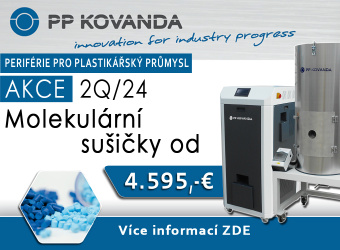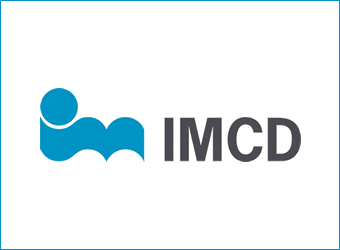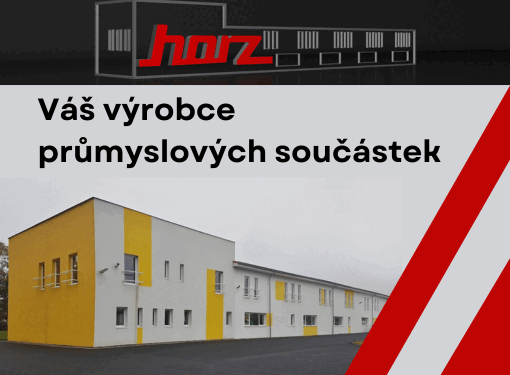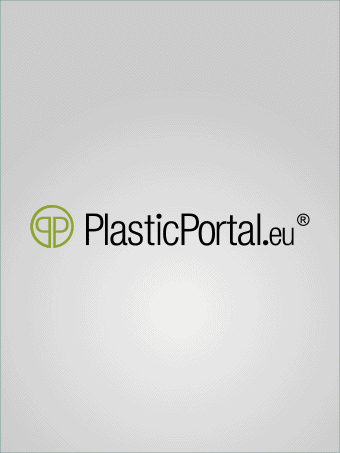Trhové ceny komoditných plastov týždenne
Uvádzame tu trhové ceny rôznych typov komoditných plastov PE-LD, PE-HD, PP a PS v strednej a východnej Európe s oneskorením 5 týždňov. Údaje spracoval náš partner myCEPPI.
Zaujímajú Vás aktuálne ceny komoditných plastov? Objednajte si túto službu Týždenné ceny komoditných plastov u nás v redakcií.
Ceny na týždeň 50/2020
The prices of “commodity” polymers were affected by the following factors last week:
-BRENT oil price 50.25 USD/barrel, further increasing prices,
-NAPHTHA (European) 424.89 USD/t, further rising prices,
-EUR/USD: 1.2110, strong Euro
-December contract monomer prices:
- Ethylene (C2) contract price +20 EUR/t (795 EUR/t)
- Propylene (C3) contract price +15 EUR/t (735 EUR/t),
- Styrene monomer (SM) contract price: price +139 €/t (918 €/t)
Polymer capacity news:
-SABIC's PE plant in Wilton shut down (400 kt/year capacity),
-INEOS Cologne, LDPE (220 kt/year capacity) is down,
-TOTAL LDPE (Carling, 110 kt/year capacity),
-Total’s PS plant in Carling (260 kt/year) shut down,
-Lyondell Basell Bere PP shutdown (350 kt/year capacity),
-BOP PP and HDPE plants are facing monomer supply problems, supply is tight.
-BRASKEM (Schkopau) produces, but availability is constantly low,
-Versalis: HIPS, ABS, and EPS - no availability.
-MOL Petrochemical (restrained production due to narrow monomer supply)
-Panic purchases, sharply rising polyolen prices.
-Supply in spot markets remains tight
In the second week of December, spot polyolen prices continued to rise due to tight supply. By the second half of last week, spot LDPE prices had approached and in many cases even exceeded € 1,100. HDPE is also very close to € 1,000. PP prices also increased signicantly. The price level of polyolen grades is at the level of the third quarter of 2019. The rise in prices and the contraction in supply happened very quickly and extremely unexpectedly. And this process shocks plastics converters. Everyone fears that price increases will continue in January or that supply will remain tight. This, in turn, also encourages converters who are otherwise provided with the polymer needed for their production and have standard stock levels to buy. These purchases seem “panicky”, availability is important, companies often buy at “any price”. One converter describes the upward price spiral: “the price, still high on Tuesday, seems realistic on Wednesday”. Spot and early in the month prices are increasingly starting to separate. This price rally is likely to continue in the week ahead, now pushing PP prices up.
The limited supply is due to the technical / maintenance problems indicated above. As well as the fact that Asian countries have overcome the epidemic. Demand is vivid, but during the epidemic, the feedstock inventories of converters there declined. Now they are simultaneously replenishing their stocks and starting to produce and even reserve for the lunar new year. To all this come unexpected shutdowns in Iran, Saudi Arabia, which are turning Turkish demand to European sources. However, this boom seems to be stalling, partly due to the long delivery time. Or now because the availability of shipping containers has also started to decline in Europe. But the factories in the Middle East will also start again (Iran) or will start again in Saudi Arabia.
And behind the sudden pick-up in demand is the convenience of converters. With declining prices from March 2020, a wide range was available until the end of September. The larger, seasonal price increase expected in September-October fell short. It didn’t seem worthwhile for either converters or traders to operate with larger inventories. As a result, throughout the summer, all products were severely oversupplied. Now, tight supply and rising prices have made it important for everyone to replenish stocks to normal levels at the same time. January 2021 is also likely to be characterized by increased demand and rising prices. Meanwhile, the demand for nished plastic products and packaging materials is not as strong as during the spring epidemic. And this could easily lead to a halt in both prices and demand in mid-to late February.
In any case, converters who have a xed supplier contract are now preferred and in a comfortable position. Their feedstock supply is secured (for the most part) and they are not threatened by the steep rise in spot polymer prices during the month. They also only get the extra quantity beyond the contracts at an increased price. Respectively, due to increased demand and unexpected shutdowns, delivery of some items will be delayed to January.
The supply situation will resolve itself by mid-February at the latest. On the one hand, because of Christmas, when purchases slow down anyway. In the last two weeks of December, most converters will shut down. On the other hand, exports outside Europe will be smaller and more imported polymers will arrive from the CIS states from the beginning of January. Also, the most important factor will be that feedstock inventory levels will slowly reach safe, normal levels.
Polyolefin grades
In the second week of December, LDPE prices ranged from 1,000 to 1,100 EUR/t. Spot prices continued to rise, by € 30-50 last week. Typical prices ranged from 1,030 to 1,080 EUR/t, which also shifted upwards. In the case of pallet deals, the prices are well above 1,100 EUR/t. Converters are forced to accept the increased price level. Now everyone is hunting for availability “at any cost”. Availability is very tight, there are virtually no MFI 0.3 to 0.8 grades on the market.
In the second week of December HDPE prices were in a range of 900-1,000 €/t in Central Europe. They increased by € 20-30 compared to the rst week of December. It is difficult to get FILM grades and the availability of BM grades is also extremely limited. In the Southern (SCE) region typical transaction prices ranged from 930-1,000 EUR/t in Central Europe. There is a signicant price difference between the Southern (SCE) and Northern (NCE) regions. In the south the typical price range is 960-1,000 €/t, in Poland and the Baltics 930-980 €/t.
HDPE BM: 900-990 €/t,
HDPE IM: 900-1,000 €/t,
HDPE FILM: 920-1,000 €/t,
In the second week of December, HDPE (100) prices ranged from 1,020 to 1,090 EUR/t. Supply is tight, pipe manufacturers cannot buy in advance as usual. Though now, at the end of the season, most will even stop and not start again until the second week of January.
In the second week of December, LLDPE C4 prices ranged from 930 to 1,080 EUR/t. Most transactions were in a range of 950 and 1,000 EUR/t. Prices rose by 40-60 euros compared to the beginning of December. The supply is tight, but there is still availability. Supply is expected to shrink further in the week ahead and a further € 20 rise in prices is likely.
In the second week of December, mLLDPE (C6) prices were in the price range of 1,000-1,190 EUR/t. They continued to rise. The typical price range was 1,050-1,100 €/t. Availability is tight. The purchase prices of some converters have risen by as much as € 200 compared to early November. This is due to the sudden narrowing of supply and the disappearance of very cheap spot offers from the market in the summer, the Spanish manufacturer withdrew.
In the second week of December, typical PPH Raffia prices ranged from 950 to 1,080 €/t, depending on the producer and grade. Compared to the previous week, the price increase was 20-30 €/t. Supply is now tight throughout the Central European region. This is now mainly due to the absorption effect of the Turkish and Asian markets. There is no availability of products from some Central European manufacturers. The price rally is similar to that experienced with polyethylene grades. Further price increases are expected in the week ahead.
In the second week of December, the prices of PPH IM non-special grades with low and medium melt ow index were in a range of 960 - 1,070 €/t last week in Central Europe. The prices of products with a high melt ow index were in a range of 990-1,090 €/t. They rose by an average of € 20-30 due to tight availability. Demand is high. In the week ahead, an even smaller price increase of 10-30 €/t is conceivable in the spot markets.
In the second week of December typical PPC prices were in a range of 1,020-1,110 €/t in CentralEurope. The typical transaction price range was 1,050-1,100 €/t. There is no big price rally yet. Although availability is tight. This is well indicated by the fact that both near to prime and off grade materials are sold in this price range. The suction power of the Turkish market is now huge. But it is not expected to cause a signicant price increase in the second half of December.
PPR prices for the second week in December were in a range of 1,050-1,160 EUR/t last week. The December price increase passed. But we did not encounter a spot market price increase similar to PPH in the course of the month. This is because there is no panic-like demand jump in the market. The supply, like other PP grades, is tight. We do not expect any further price increases in the second half of December.
The table below shows the typical prices of the last week (total truckload 20-22.5 t):
HDPE Pipe (100) LDPE Film LDPE GP LLDPE C4 mLLDPE C6 PPC PPH IM PPH IM HMFR PPH Raffia PPR GPPS HIPS EPS ABS | 1020-1090 1000-1100 1000-1080 930-1080 1000-1190 1020-1110 960-1070 990-1090 950-1080 1050-1160 1150-1250 1240-1340 1120-1230 1900-2250 |
Polystyrene grades EPS prices were in a range of 1,120-1,230 €/t last week. The typical price range was 1,150-1,190 €/t. Due to the limited supply, the price increase passed. Who can, now buys in advance. However, there is little opportunity for this now, with virtually no availability for December.
In the second week of December, GPPS prices ranged from 1,150 to 1,250 EUR/t. HIPS prices were in a range of 1,240-1,340 €/t. The price increase has passed. Direct producer prices are at the bottom of the price band, while spot and distribution prices are at the top of the price band. Supply is still short. There is virtually no availability with merchants. However, PS producers strive to serve their key customers directly. And distributors are trying to reschedule orders for January.
In the second week of December the natural ABS price range was 1,900-2,250 EUR/t, they increased by 100-150 EUR/t compared to the previous week. We have received news about ABS prices over € 2,250 from Poland and the Baltics. This is likely to project prices for the week ahead. Thus, price increases in spot markets are likely to continue in the second half of December.
| Typ | Cena |
|---|---|
| HDPE blow molding | 959 € / t |
| HDPE film | 958 € / t |
| HDPE injection molding | 953 € / t |
| HDPE pipe (100) | 1051 € / t |
| LDPE film | 1051 € / t |
| LDPE general purpose | 1045 € / t |
| PP co-polymer injection molding | 1068 € / t |
| PP homo-polymer fiber | 1012 € / t |
| PP homo-polymer injection molding | 1041 € / t |
| PPR | 1105 € / t |
| GPPS | 1223 € / t |
| HIPS | 1282 € / t |
| EPS | 1172 € / t |
myCEPPI - nový prístup v poradenstve a v spravodajstve v oblasti plastov. Poskytneme Vám detailný, aktuálny a na mieru vytvorený obraz o trhu s plastami v strednej a východnej Európe.
Vychádzame z našich osobných a pevných vzťahoch s významnými hráčmi v plastikárskom priemysle v strednej a východnej Európe. Každý mesiac uskutočňujeme stovky osobných a telefonických hovorov so spracovateľmi plastov, distribútormi a výrobcami surovín, zúčastňujeme sa odborných veľtrhov a konferencií.
Informácie, ktoré zhromažďujeme v rámci tohto procesu, tvoria základ našich týždenných cenových reportov komoditných plastov. Obsahujúce taktiež analýzu trhu. Tieto reporty taktiež slúžia ako východiskový bod pre naše ďalšie konzultačné služby ktoré poskytujeme spoločnostiam, ktoré potrebujú pomoc pri vstupe na trh, prípadne pri rozširovaní svojho biznisu, zorientovaní sa v situácií na trhu, atď. Naši odborníci majú desiatky rokov skúseností s plastami.
Radi Vám poskytneme naše služby.
História cien
- 2024:
- 2023:
- 2022:
- 2021:
- 2020:
- 2019:
- 2018:
- 2017:
Najnovšie inzeráty
Spolupráca: Voľné výrobné kapacity na vstrekolisoch a extruznej linke 950T, 1300T, 2700T
04.04.2024 | ID: 202418891
Top inzerát-
05.03.2024 | ID: 202418726
Top inzerát -
26.04.2024 | ID: 202419032
Predám: PA6 Slovamid 6 FRC 2 LS originál oranžový, sivý
26.04.2024 | ID: 202419031
Predám: PP regranulát farba zelená, modrá MFI 8-12
25.04.2024 | ID: 202419030
-
24.04.2024 | ID: 202419027
Predám: Plastová drť čierna PPPE,350€/t
24.04.2024 | ID: 202419026
-
24.04.2024 | ID: 202419025
-
23.04.2024 | ID: 202419024
-
26.04.2024 | ID: 202419032
Kúpim: Balíková LDPE fólia ,500 t/mesiac
22.04.2024 | ID: 202419013
Kúpim: Špinavý zvyškový granulát z podláh
22.04.2024 | ID: 202419011
-
17.04.2024 | ID: 202418988
Kúpim: POM drť farebná, biela, natur
17.04.2024 | ID: 202418986
-
11.04.2024 | ID: 202418943
Kúpim: PET odrezky z výroby, tácky, iba transparent
10.04.2024 | ID: 202418939
Kúpim: PA6.6 GF25, TECHNYL A218, originál
09.04.2024 | ID: 202418928
-
09.04.2024 | ID: 202418927
-
05.03.2024 | ID: 202418726
Top inzerát Predám: PA6 Slovamid 6 FRC 2 LS originál oranžový, sivý
26.04.2024 | ID: 202419031
Predám: PP regranulát farba zelená, modrá MFI 8-12
25.04.2024 | ID: 202419030
-
24.04.2024 | ID: 202419027
Predám: Plastová drť čierna PPPE,350€/t
24.04.2024 | ID: 202419026
-
24.04.2024 | ID: 202419025
-
23.04.2024 | ID: 202419024
Predám: HDPE fólia v rolkách 30 t
22.04.2024 | ID: 202419021
Predám: PA 6.6 Ultramid A3U42G6 drť
22.04.2024 | ID: 202419020
Najbližšie výstavy
06.05.2024 - 10.05.2024 | Orlando
Saudi Plastics and Petrochem 2024
06.05.2024 - 09.05.2024 | Rijád
06.05.2024 - 09.05.2024 | Stuttgart
07.05.2024 - 10.05.2024 | Budapešť
07.05.2024 - 10.05.2024 | Budapest
13.05.2024 - 17.05.2024 | München
14.05.2024 - 17.05.2024 | Jönköping
14.05.2024 - 16.05.2024 | Rheda-Wiedenbrück
Romexpo Metalshow TIB - Bukurešť 2024
14.05.2024 - 17.05.2024 | Bukurešť
23.04.2024
23.04.2024
23.04.2024
23.04.2024
06.05.2024
23.04.2024
Mitsubishi Electric organizuje Inžiniersky workshop: Využitie prediktívnej údržby v pohonoch
23.04.2024
Vstrekovanie plastov pre netechnológov
24.04.2024
Školenie - Konštruktér plastových dielov
25.04.2024
Vtokové systémy vstrekovacích foriem, organizovaný spoločnosťou Plasty Gabriel s.r.o.
25.04.2024
Ponuky práce
Nastavovač vstrekolisov - Tristone Flowtech Slovakia s.r.o.
11.04.2024
Plastikár, lepiaci personál - FORM s.r.o.
10.04.2024
Supervisor logistiky, skladu a expedície - KNP s.r.o.
09.04.2024
Skladník - AIS Automotive Interior Systems Slovakia s.r.o.
09.04.2024
Obchodný zástupca / špecialista predaja - Plastcom, spol. s r.o.
04.04.2024
Údržba a obsluha chodu výrobnej linky - Plastcom, spol. s r.o.
04.04.2024
Technik kontroly kvality - ESOX-PLAST s.r.o.
04.04.2024
Majster odborného výcviku - ESOX-PLAST s.r.o.
04.04.2024
Manažér obchodu - Ecocycle s.r.o
25.03.2024
Plastikársky slovník







